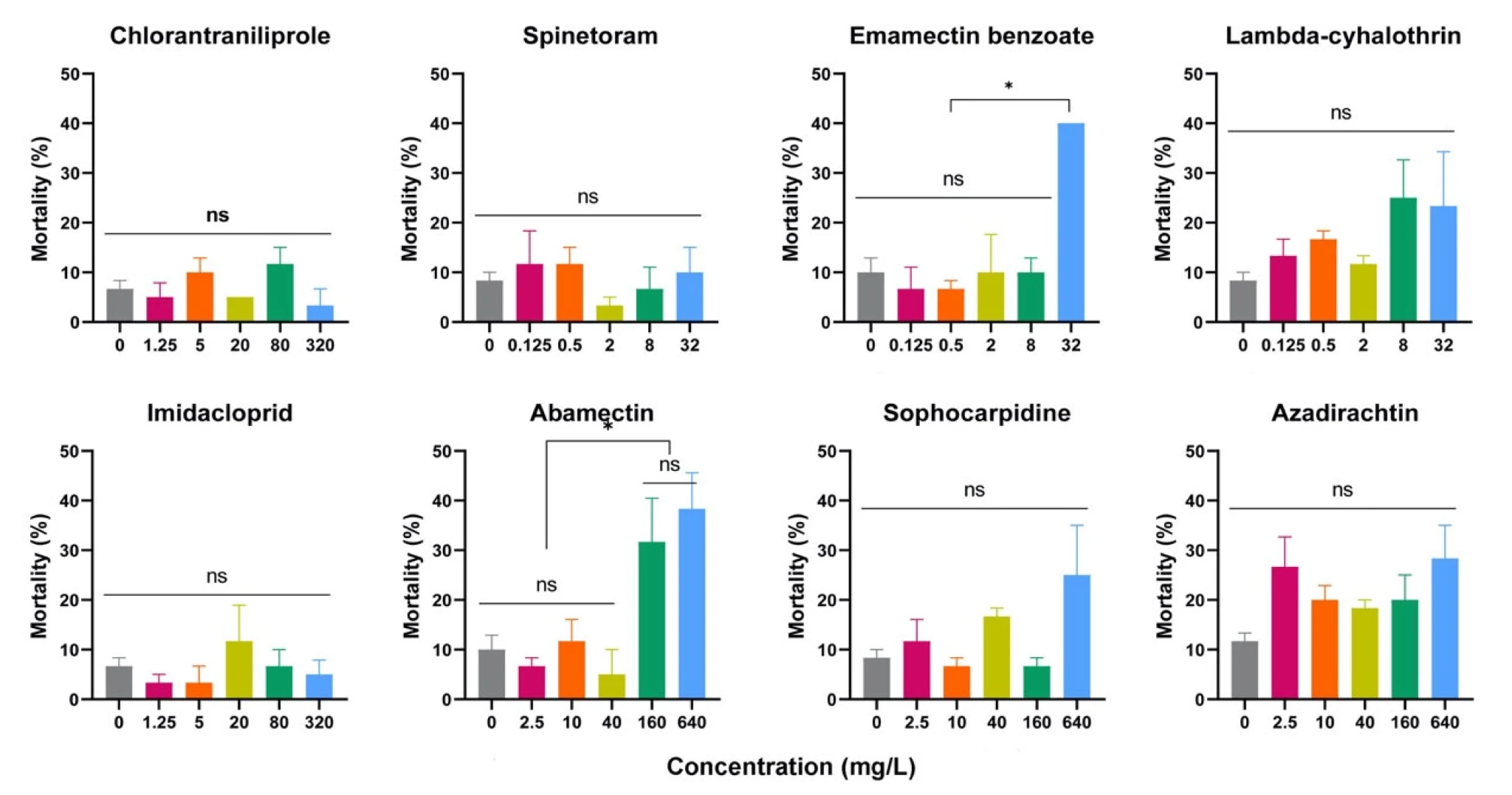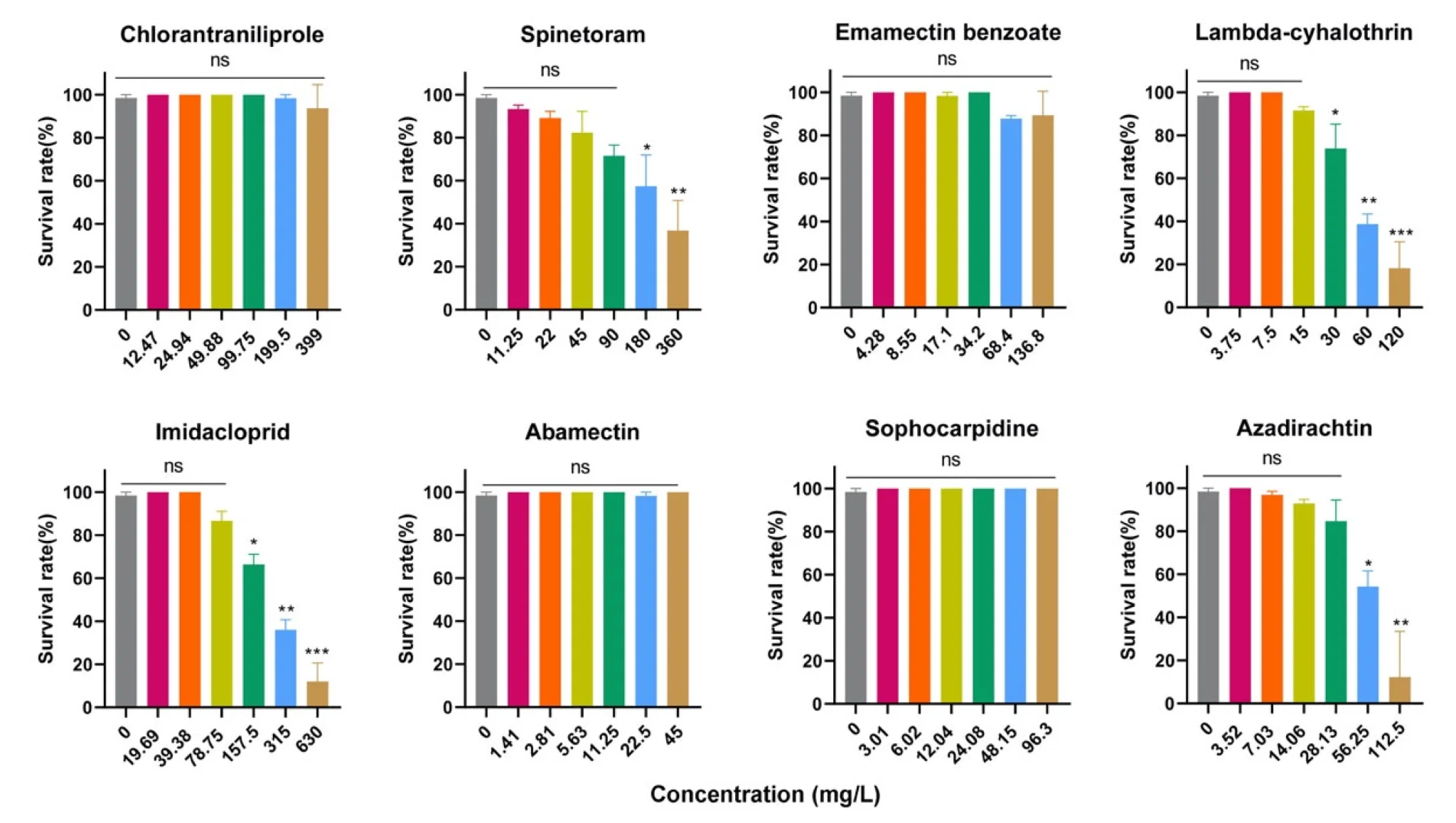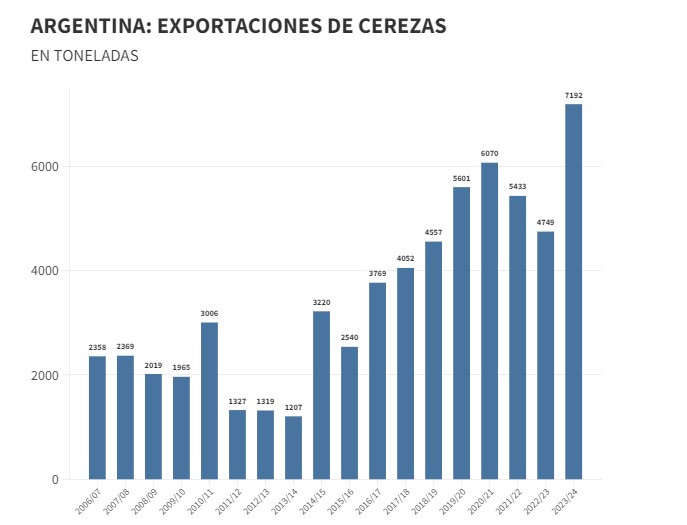Drosophila suzukii is currently one of the most feared insect pests in fruit growing, with estimated losses reaching up to 80% of production in crops of small, fleshy fruits such as cherries, strawberries, and blueberries.
Its tendency to attack ripe fruit, combined with a rapid developmental cycle and high fecundity, makes it difficult to manage using chemical means alone.
For this reason, integrating the use of natural enemies with chemical control is essential. In this context, Trichopria drosophilae, a pupal parasitoid of D. suzukii, has proven to be a promising biocontrol agent.
However, knowledge about the interaction between commonly used insecticides in fruit orchards and this beneficial insect remains limited.
Study on insecticide toxicity
A recent study evaluated the toxicity of eight insecticides, six chemical-synthetic ones: chlorantraniliprole, spinetoram, emamectin benzoate, abamectin, lambda-cyhalothrin, and imidacloprid; and two botanical ones: azadirachtin and sophocarpidine, on D. suzukii and T. drosophilae collected from a cherry orchard in China.
The results showed a greater susceptibility of D. suzukii larvae compared to adults, suggesting that treatments are more effective when targeted at this life stage.
In particular, emamectin benzoate, spinetoram, lambda-cyhalothrin, abamectin, and sophocarpidine demonstrated high toxicity against both larvae and adults, with very low LC50 values.
Effects on parasitoids
The different insecticides exhibited varying effects on T. drosophilae. Of the products tested, only lambda-cyhalothrin and imidacloprid showed acute toxicity to adult parasitoids, with risk levels classified as “medium” (safety factors between 1.4 and 4.4).
The other six insecticides were classified as “low risk,” making them compatible with integrated pest management (IPM) programs.
This is particularly significant for spinetoram and emamectin benzoate, which combine high efficacy against D. suzukii with good tolerance by the parasitoid.
 Figure 1. The mortality of Drosophila suzukii pupae exposed to eight insecticides with different concentrations. One-way ANOVA followed by Tukey’s multiple comparison test was performed with a significant difference at * p < 0.05, ns p > 0.05. Error bars represent the standard error of the mean.
Figure 1. The mortality of Drosophila suzukii pupae exposed to eight insecticides with different concentrations. One-way ANOVA followed by Tukey’s multiple comparison test was performed with a significant difference at * p < 0.05, ns p > 0.05. Error bars represent the standard error of the mean.
Sublethal effects and implications
Beyond acute toxicity, the study also examined sublethal effects of the insecticides, evaluating how exposure of treated D. suzukii larvae and pupae might affect parasitism rates and the emergence success of the next generation of T. drosophilae.
Results showed a reduction in the reproductive performance of the parasitoid, even in the presence of sublethal residues.
Specifically, sophocarpidine at LC50 concentration reduced parasitism rates by 32%. When D. suzukii pupae were exposed to insecticides, adult parasitism rates of T. drosophilae were reduced by spinetoram, imidacloprid, and azadirachtin at LC50 concentrations.
Sublethal doses of all insecticides decreased the emergence rate of the subsequent generation but did not affect adult parasitism rates.
 Figure 2. The survival rate of Trichopria drosophilae adults exposed to eight insecticides with different concentrations. One-way ANOVA followed by Tukey’s multiple comparison test was performed with a significant difference at *** p < 0.0001, ** p < 0.001, * p < 0.05, ns p > 0.05. Error bars represent the standard error of the mean.
Figure 2. The survival rate of Trichopria drosophilae adults exposed to eight insecticides with different concentrations. One-way ANOVA followed by Tukey’s multiple comparison test was performed with a significant difference at *** p < 0.0001, ** p < 0.001, * p < 0.05, ns p > 0.05. Error bars represent the standard error of the mean.
Ecological considerations
These findings highlight the need for careful selection of plant protection products in orchards where T. drosophilae populations are introduced or supported.
Even if an insecticide appears selective for adults, indirect effects on parasitoids through the host can compromise control efficacy.
Therefore, evaluating both direct toxicity and secondary sublethal impacts is essential for developing pest control strategies that are ecologically compatible.
Emamectin benzoate and spinetoram emerge as promising options, while the use of lambda-cyhalothrin and imidacloprid should be approached with caution.
This study provides a scientific basis to guide pest management practices toward solutions that minimize harm to T. drosophilae, thus balancing effectiveness with the conservation of functional biodiversity in orchards.
Source: Gao, H., Wang, Y., Chen, P., Zhang, A., Zhou, X., & Zhuang, Q. (2024). Toxicity of Eight Insecticides on Drosophila suzukii and Its Pupal Parasitoid Trichopria drosophilae. Insects, 15(11), 910. https://doi.org/10.3390/insects15110910
Source images: Gao et al., 2024; Swiss Federal Institute for Forest, Snow and Landscape Research, Birmensdorf.
Andrea Giovannini
University of Bologna (ITA)
Cherry Times - All rights reserved














